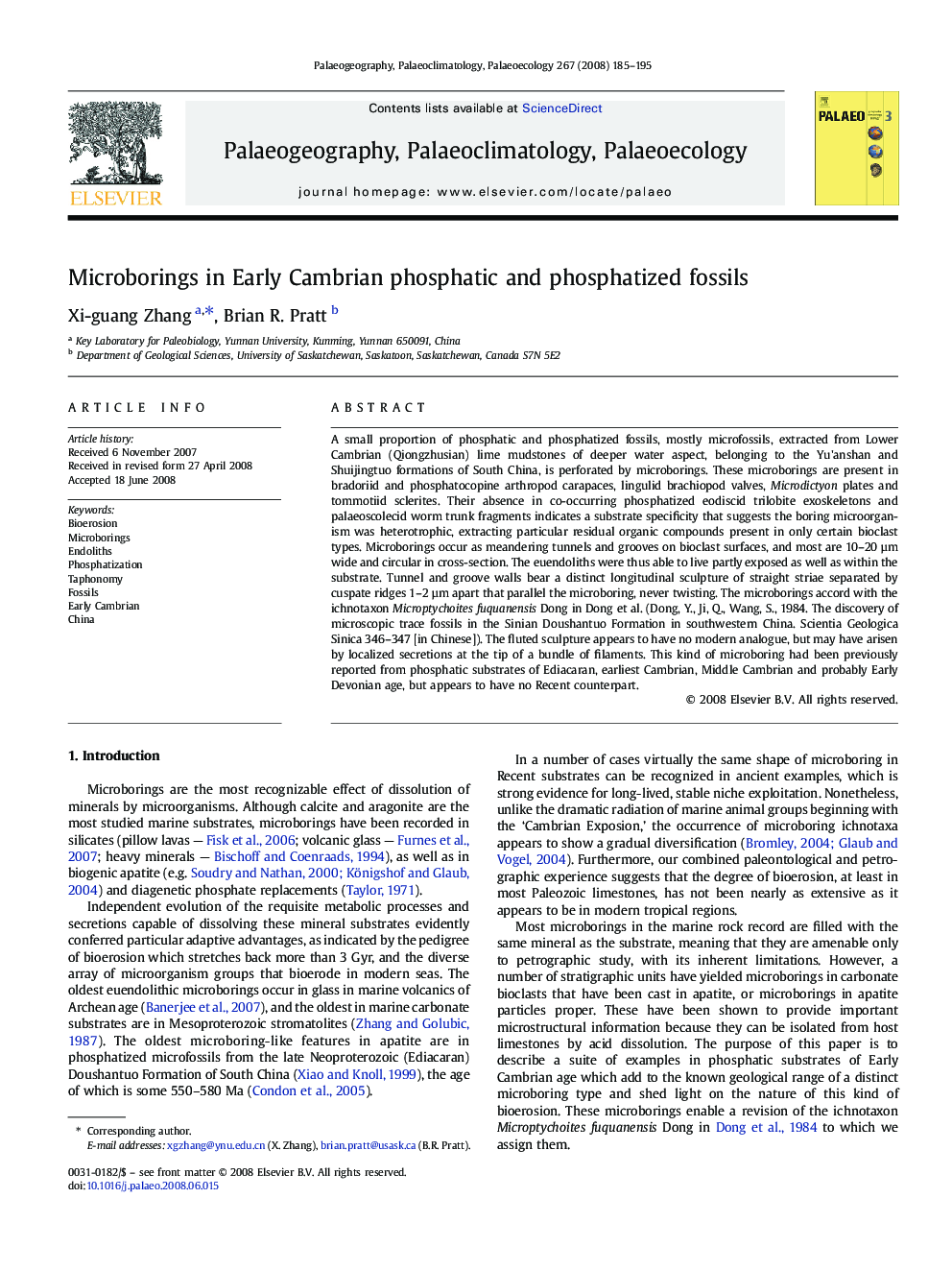| Article ID | Journal | Published Year | Pages | File Type |
|---|---|---|---|---|
| 4468467 | Palaeogeography, Palaeoclimatology, Palaeoecology | 2008 | 11 Pages |
A small proportion of phosphatic and phosphatized fossils, mostly microfossils, extracted from Lower Cambrian (Qiongzhusian) lime mudstones of deeper water aspect, belonging to the Yu'anshan and Shuijingtuo formations of South China, is perforated by microborings. These microborings are present in bradoriid and phosphatocopine arthropod carapaces, lingulid brachiopod valves, Microdictyon plates and tommotiid sclerites. Their absence in co-occurring phosphatized eodiscid trilobite exoskeletons and palaeoscolecid worm trunk fragments indicates a substrate specificity that suggests the boring microorganism was heterotrophic, extracting particular residual organic compounds present in only certain bioclast types. Microborings occur as meandering tunnels and grooves on bioclast surfaces, and most are 10–20 µm wide and circular in cross-section. The euendoliths were thus able to live partly exposed as well as within the substrate. Tunnel and groove walls bear a distinct longitudinal sculpture of straight striae separated by cuspate ridges 1–2 µm apart that parallel the microboring, never twisting. The microborings accord with the ichnotaxon Microptychoites fuquanensis Dong in Dong et al. (Dong, Y., Ji, Q., Wang, S., 1984. The discovery of microscopic trace fossils in the Sinian Doushantuo Formation in southwestern China. Scientia Geologica Sinica 346–347 [in Chinese]). The fluted sculpture appears to have no modern analogue, but may have arisen by localized secretions at the tip of a bundle of filaments. This kind of microboring had been previously reported from phosphatic substrates of Ediacaran, earliest Cambrian, Middle Cambrian and probably Early Devonian age, but appears to have no Recent counterpart.
